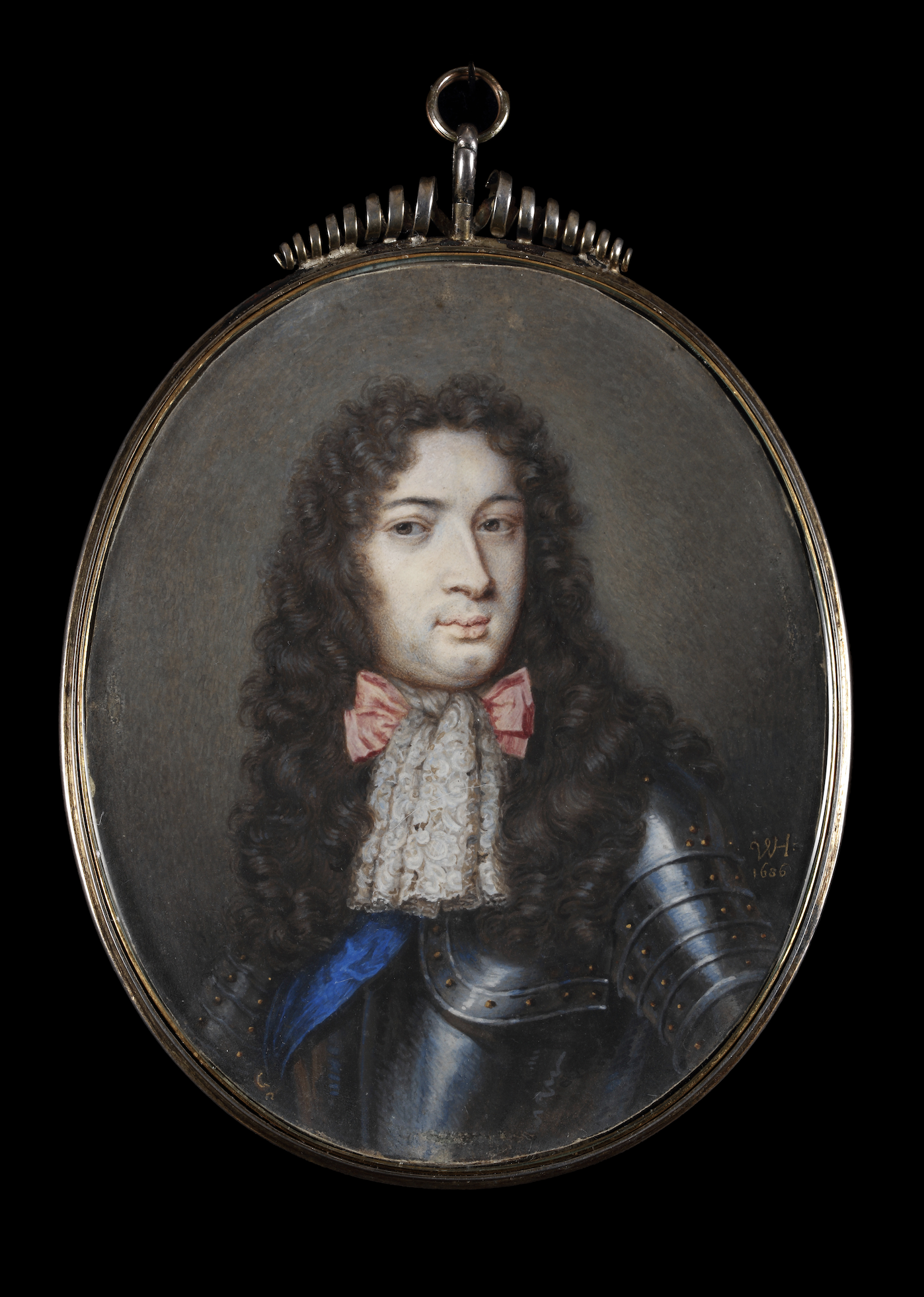WERNER HASSEL (fl. circa 1686)
Portrait miniature of Louis de Duras, 2nd Earl of Feversham (c.1641-1709), facing right in gilt-studded armour, lace cravat and wearing the Sash of the St. Esprit; 1686
Watercolour on vellum
Oval, 4 in. (102 mm) high
Signed with monogram and dated 1686
Literature: Schidlof, 1964, pl. 268, fig. 526
Provenance: Christies, 3rd May 1993, lot 169 (Another version sold at Sotheby’s 11 October 1994 )
£12,500
Please contact Emma Rutherford: emma@portraitminiature.com / +44(0)7983510056
“Although little is known of his life, his popularity is apparent through the many engravings and mezzotints which have been made of his work.”
According to art historian and art dealer Leo R. Schidlof, portrait miniaturist Werner Hassel was ‘a skillful artist whose works are rare … well drawn and have character’.[1] Born in Germany, Hassel came to London in the late seventeenth century to train under the pre-eminent contemporary court painter, Sir Godfrey Kneller. Seemingly impressed by his gifted young pupil, Kneller painted Hassel’s portrait in a likeness that was subsequently engraved by Pieter Schenck the Elder.[2]
Hassel demonstrated versatility in his ability to work with watercolours and enamels on a miniature scale and to produce full-length likenesses in oils. Although little is known of his life, his popularity is apparent through the many engravings and mezzotints which have been made of his work, including Peter Vanderbank’s engraving after Hassel’s portrait of John Erskine, 6th Earl of Mar, leader of the Jacobite forces at the disastrous Battle of Sheriffmuir in 1715.[3]
Diarist George Vertue, writing in the mid-eighteenth century, states that Hassel trained the prominent landscape artist, George Lambert; until further evidence for this claim is discovered, this must remain tantalisingly unconfirmed yet the anecdote does provide a telling example of the high stead in which Hassel’s work was held by his contemporaries.[4]
Hassel’s work is represented in major collections, including the Victoria and Albert Museum, London and the Bayerisches Nationalmuseum, Munich.
The sitter, Louis de Duras, known as Durfot and later as the Marquis de Blacheforte in France, was the nephew of distinguished military leader, Marshal Turenne. He had served as ambassador in Paris from 1677 to 1678. Through his marriage to the daughter of George Sondes, 1st Earl, an English politician who served in the House of Commons, Duras inherited the title of Earl of Feversham, playing a crucial role as a royal adviser. Having met James, then Duke of York in 1650, he went to England in 1655, where he was naturalized and granted the title Baron Duras. He served as Lord Chamberlain to Queen Consort Catherine from 1680 until her death in 1705, and he was a Gentleman of the Bedchamber to both Charles II and James II. On James II's ascension in 1685, Louis was appointed colonel of the first troop of horse guards and took command of the royal forces in the west during the Duke of Monmouth's uprising.
[1] L. R. Schidlof., The Miniature in Europe: In the 16th, 17th, 18th and 19th centuries (Austria: Akademische Druck, 1964) p.335.
[2] An example of this engraving is held at The British Museum [1943,0410.985]
[3] An example of this engraving is held at National Galleries Scotland [SP III 101.1]
[4] G. Vertue, ‘Notebooks III’, Walpole Society Journal, Vol. 22 (1933-1934) p.6.

